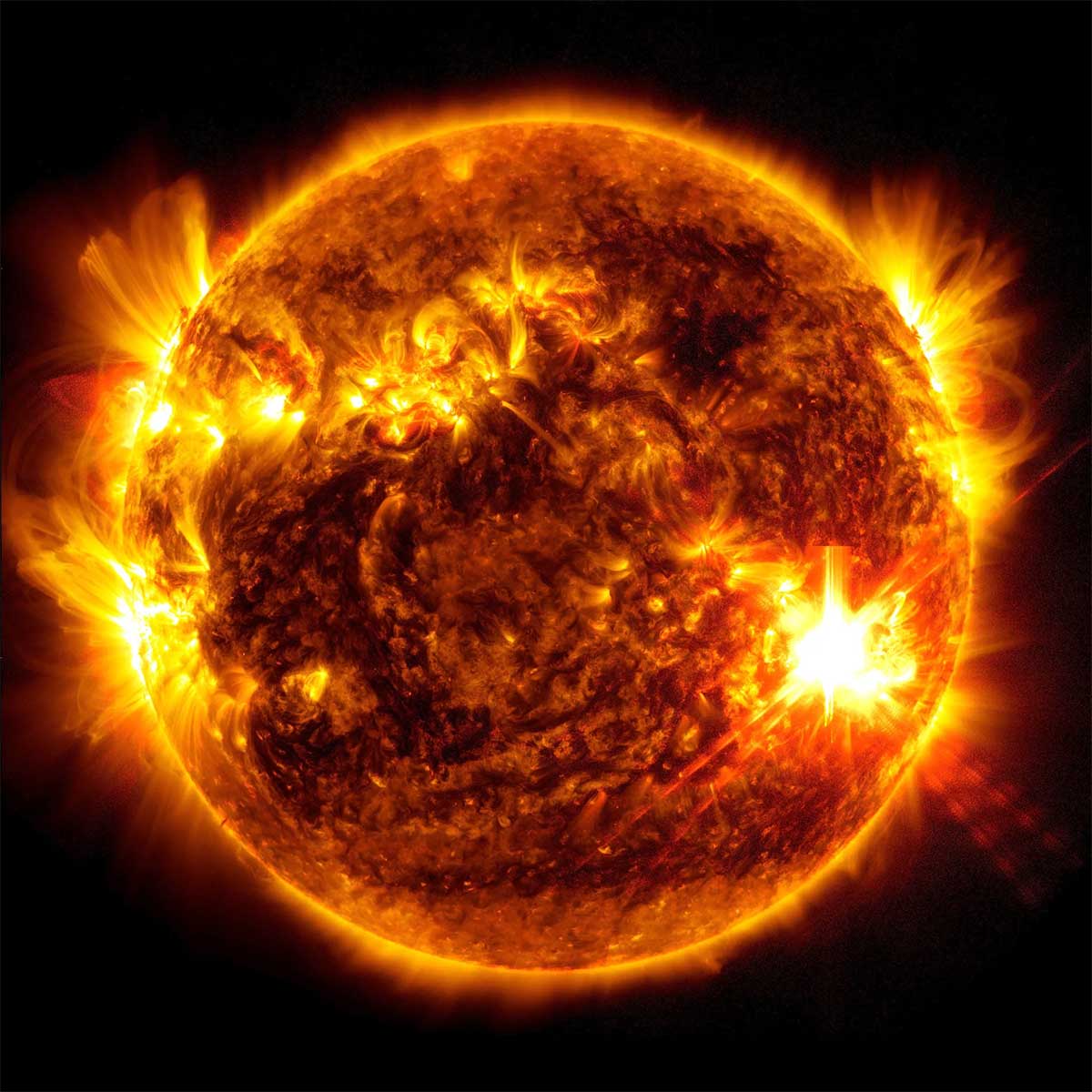Solar storms from the Sun have been a common thing in our solar system and Earth has faced many Solar storms, but this time Earth has faced the most intense Solar storm in decades. On 14th May a continuous attack of large solar flares and coronal mass ejections (CMEs) carrying clouds of charged particles and magnetic fields on Earth. This created a very strong solar storm to reach Earth and also resulted in one of the strongest displays of auroras in 500 years.
It all started on May 7 when two strong solar flares were spotted. It was observed that from May 7 to May 11, there were multiple strong solar flares and a minimum of seven coronal mass ejections (CMEs) stormed and directed towards Earth. Out of these flares eight of them were the most strongest type also known as X-class, with a peak rating of X5.8. Even after that the same solar region has ejected many more large and strong flares including the one on May 14 having a peak rating of X8.7.
These flares traveled at a speed of 3 million miles per hour. The CMEs were bunched up in solar storm waves that reached Earth after May 10. This created a geomagnetic storm the a Rating of G5 which is the highest level on the geomagnetic storm scale and has not been since 2003.
Elizabeth MacDonald, a NASA heliophysics citizen science lead and a space scientist at NASA’s Goddard Space Flight Center in Greenbelt, Maryland said:
“The CMEs all arrived largely at once, and the conditions were just right to create a really historic storm,”
“Cameras — even standard cell phone cameras — are much more sensitive to the colors of the aurora than they were in the past,”
“By collecting photos from around the world, we have a huge opportunity to learn more about auroras through citizen science.”
The strong intensity of this solar storm can be seen as it created brilliant auroras around the globe. Auroras were even visible at unusually low latitudes, including the southern U.S. and northern India. The most strong auroras were seen in the night sky of May 10 which continued to light up skies throughout the weekend.
Solar flares are actually a high intensity bursts of the electromagnetic radiation that originates from the sunspots on the surface of Sun. These solar flares are classified according to there size. The X-class flares are the most powerful. There strength are rated from 1 to 10, 10 being the strongest.
Delores Knipp, a research professor in the Smead Aerospace Engineering Science Department and a senior research associate at the NCAR High Altitude Observatory, in Boulder, Colorado said
“It’s a little hard to gauge storms over time because our technology is always changing,”
“Aurora visibility is not the perfect measure, but it allows us to compare over centuries.”
If anyone of you have sighted aurora, you can submit reports to Aurorasaurus.org. These sighting are very valuable for helping scientists understand the extent of the event.
The notifications of this intense solar storm was sent to many power grids and commercial satellites to help them mitigate potential impacts by National Oceanic and Atmospheric Administration’s Space Weather Prediction Center. Many spacecrafts were powered down to avoid any issues. Even NASA’s ICESat-2 — which studies polar ice sheets — entered safe mode, likely because of increased drag due to the storm.
The solar region that was responsible for this stormy weather on sun is now turning on the backside of the Sun. Though its impact can’t reach Earth but that doesn’t mean the storm is over. NASA’s STEREO (Solar Terrestrial Relations Observatory), located at about 12 degrees ahead of Earth in its orbit, will be continuing to have an eye on the active region until it will be no longer visible from Earth.








